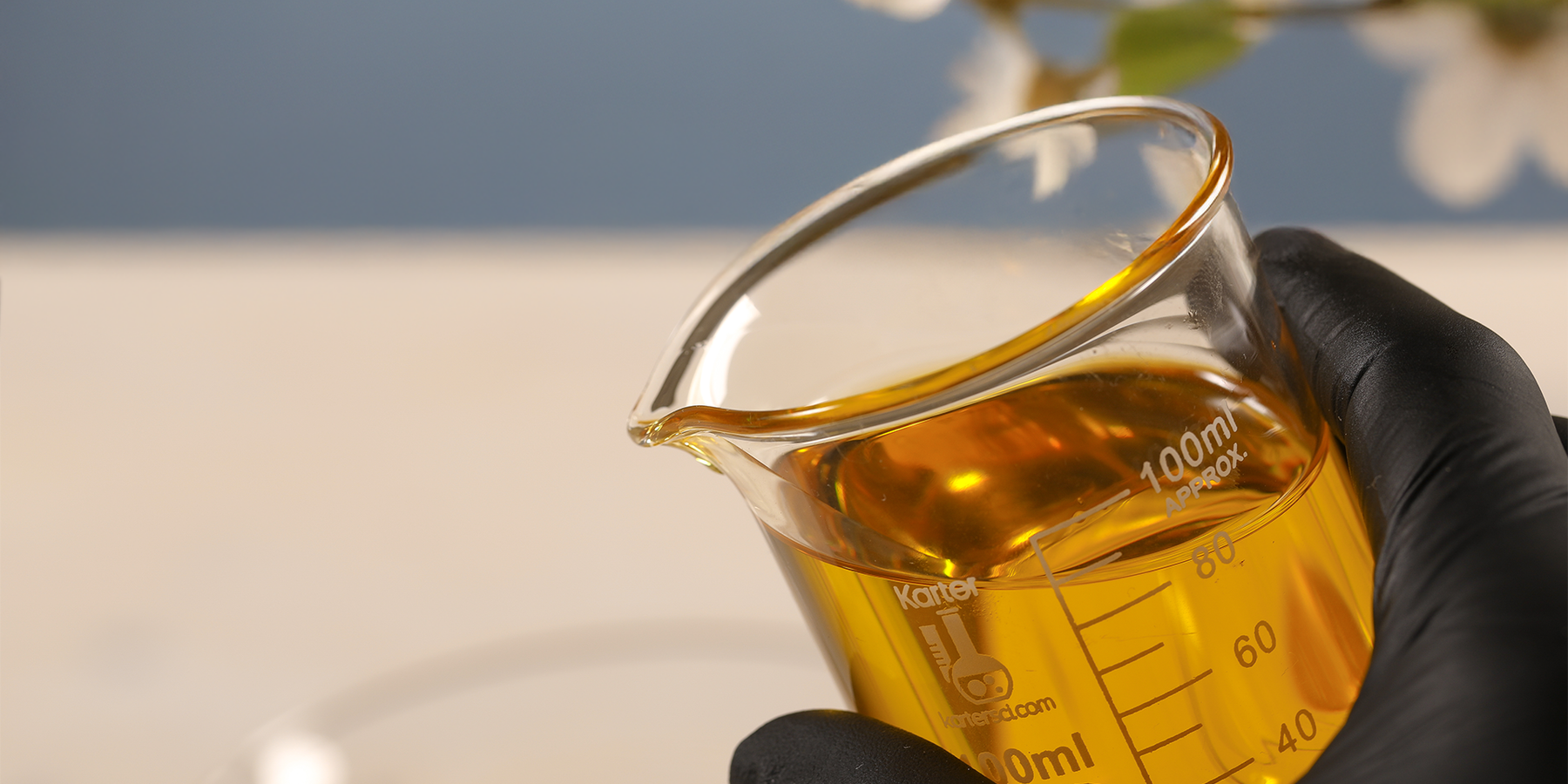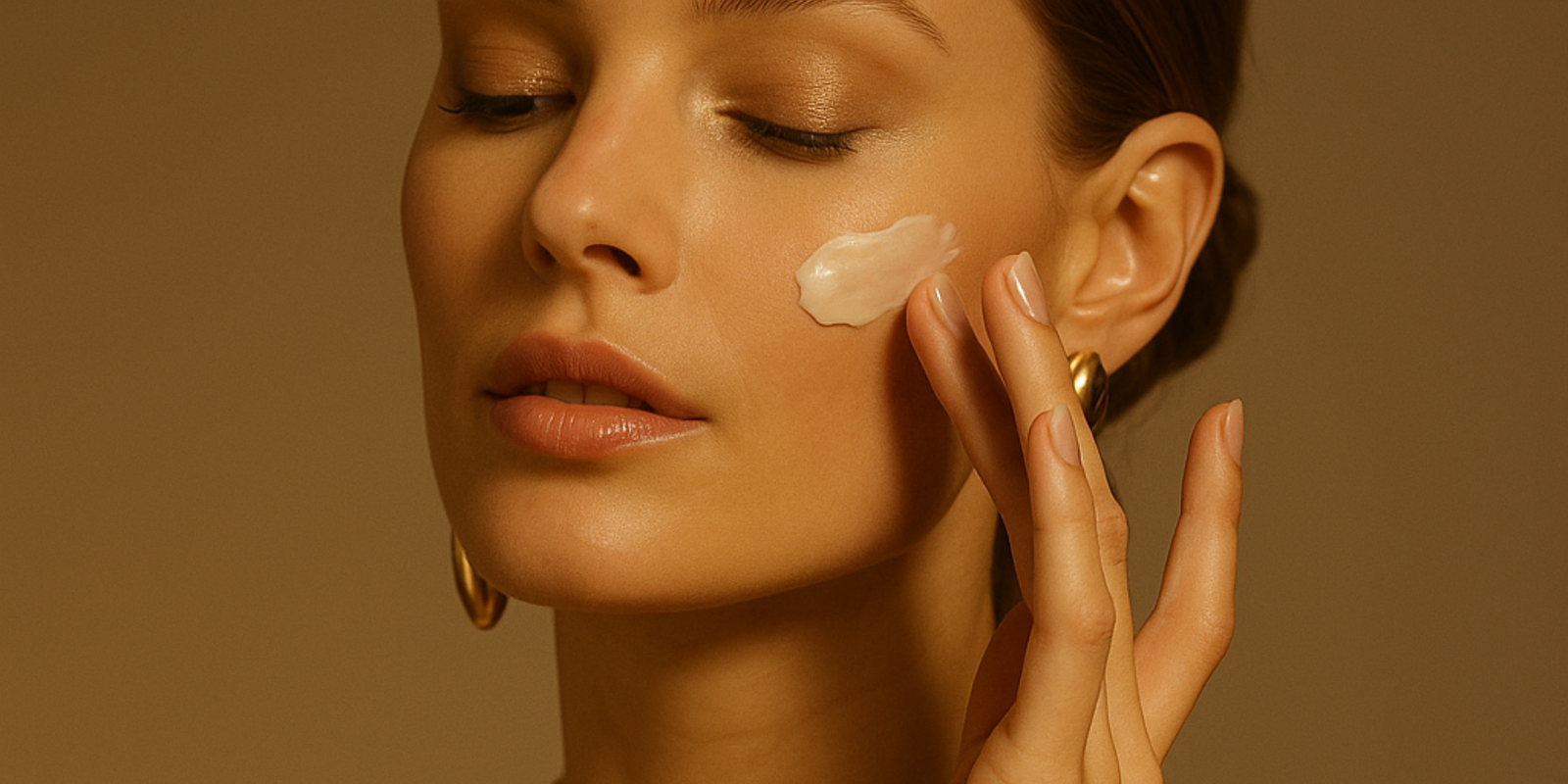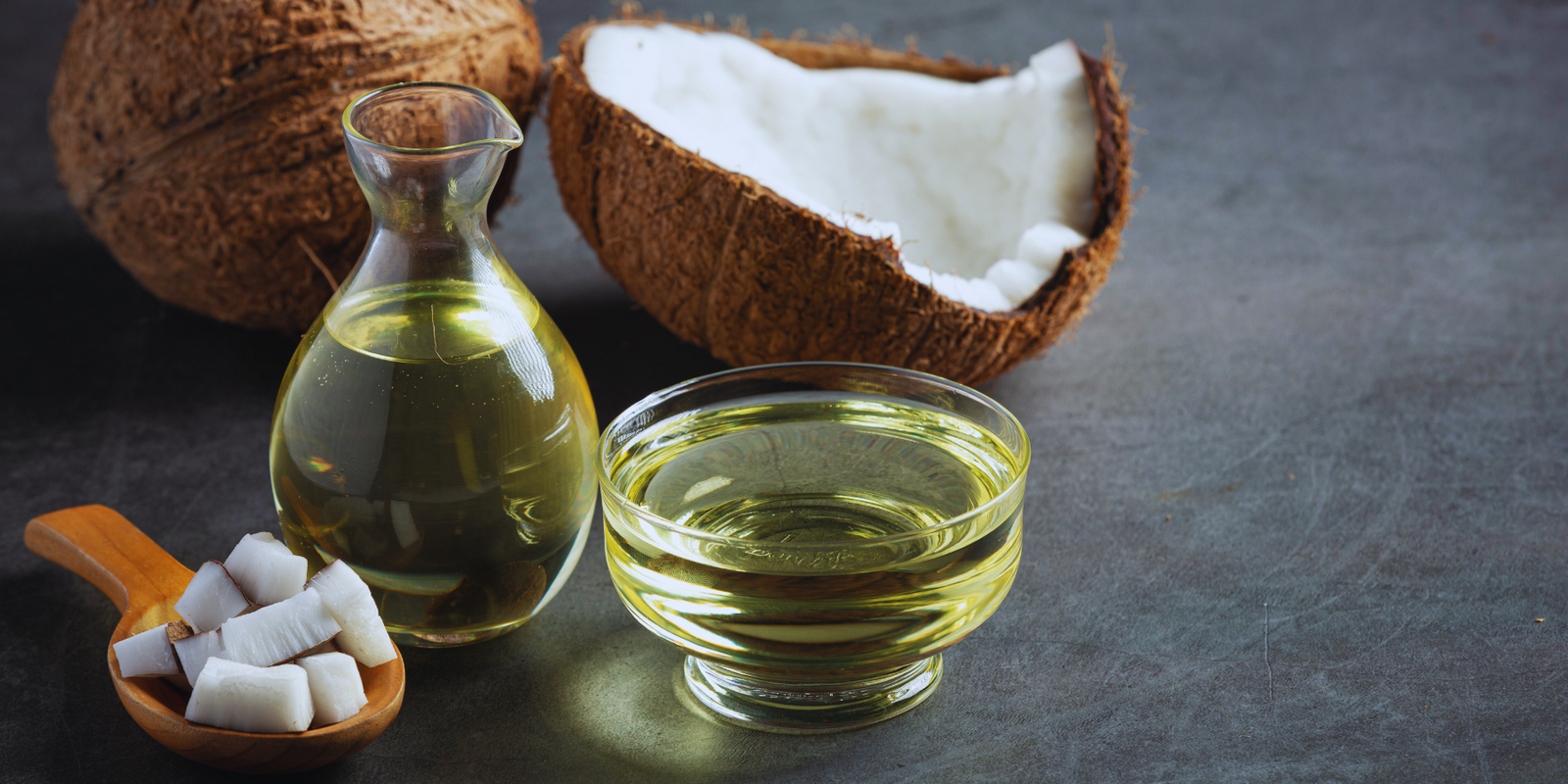EWG Verified & Leaping Bunny Certified | Free Gift $200+
EWG Verified & Leaping Bunny Certified | Free Gift $200+
Are Seed Oils Bad For Your Skin?

When it comes to seed oils and your skin, it’s not about avoiding them- it’s about choosing wisely.
Are Seed Oils Bad For Your Skin?
Introduction.
Seed oils have become major villains of the wellness world. I hear it all the time— customers questioning whether our products are “clean” because they contain seed oils, or insisting that all seed oils are inflammatory and toxic. The truth? It’s not that simple.
Like most things in skincare and nutrition (and life!), there’s nuance. Not all seed oils are created equal, and lumping them together as universally harmful, especially when it comes to topical use, is super misleading.
In this blog post, I will separate fact from fear and talk about what actually matters: the type of seed oil, how it’s processed, how it’s used, and whether we’re putting it on our skin or into our bodies.
What are seed oils?
Seed oils are exactly what they sound like - oils extracted from the seeds of plants. In fact, almost 80% of plant/carrier oils are seed oils. The remaining 20% are typically derived from fruit pulp (olive and avocado oils) or nuts (almond and macadamia oils). There are dozens of different types of seed oils, including pomegranate, sacha inchi, hemp, flaxseed, chia, castor, grape seed, safflower, evening primrose, rosehip, and pumpkin seed.
Nowadays, when people talk about seed oils, they generally are referring to a specific set of seed oils that includes canola, soybean, corn, and sunflower. All of the oils I mentioned in this paragraph are seed oils, but there is a huge difference between the two sets.
The source matters.
Since ‘seed oil’ is a blanket term for many different oils, it’s important to pay attention to the source material. Most seed oils come from plants that have been cultivated for hundreds or even thousands of years, like chia, flax, and pomegranate. These are straightforward, natural crops that have long histories in traditional medicine and skincare. The way they’re grown and harvested hasn’t changed much over time. However, some seed oils are the result of heavy genetic modification.
For example, canola oil, which comes from the rapeseed plant, was initially considered unsafe for human consumption. It was first used as an industrial lubricant during World War II. The oil contains extremely high levels of erucic acid, which was linked to heart damage in animal studies. In order to use it in food, the plant was genetically modified to contain less of the harmful acid. It was also modified to withstand heavy pesticide and herbicide use, allowing it to be farmed on a massive industrial scale.
That’s where the real concerns come in. Genetically modified crops like canola are often part of monoculture farming systems, which deplete soil health, reduce biodiversity, and rely on toxic chemicals like glyphosate. These chemicals don’t just stay in the field—they can end up in the final product and in our bodies.
Extraction methods make or break the oil.
How a seed oil is extracted plays a massive role in its quality. Cold-pressed oils retain their fatty acid profile, antioxidants, and vitamins. This is the most natural method, which yields the purest oil; these are the oils you want in skincare and in your diet.
Unfortunately, many mass-market seed oils are refined with hexane or bleached and deodorized to extend shelf life—processes that degrade the oil and introduce compounds you don’t want on your skin or in your body. Always look for cold-pressed, unrefined oils when evaluating skincare formulations.
Fatty acid composition is what sets seed oils apart.
Fatty acids are the building blocks of fats/oils. The fatty acid composition of seed oils varies widely, and that’s what gives each oil its unique properties. Some seed oils—like sacha inchi, sunflower, safflower, and grapeseed—are extremely high in omega-6 fatty acids. Others, like flaxseed and chia seed, are rich in omega-3s. Still others, such as castor and pomegranate, contain different and less common fatty acids, such as omega-9 and omega-5, respectively. Here’s a blog post I wrote about fatty acids if you’d like to read up on fatty acids in more detail.
These fatty acids influence how the oil behaves: topically, omega-6s are great for maintaining the skin barrier and preventing water loss, while omega-3s work wonders to calm inflammation. Understanding the fatty acid profile of a seed oil is key to knowing whether it supports or disrupts balance on the skin or in the body. For the sake of this article, I am going to focus only on omega-3 and omega-6, as these are typically the most common fatty acids found in seed oils.
Topical use vs. internal consumption.
Seed oils behave very differently depending on how you use them. Applying an oil (or really any ingredient!) to your skin and consuming it are two completely separate biological processes. What happens inside your body isn’t the same as what happens on the surface.
INTERNAL CONSUMPTION
When you consume a seed oil, it goes through your digestive system and gets broken down by enzymes into smaller components. These components are absorbed through the intestinal lining and enter your bloodstream, where they're either burned for energy, used to build cell membranes/hormones, or stored in your fat cells.
Now, when it comes to consuming seed oils, the fatty acid composition, as I previously discussed, makes a huge difference in how they interact with your body. Generally speaking, the ideal ratio of omega-6 to omega-3 in your body is about 4:1. The typical Western diet has most people consuming a ratio closer to 20:1, which is where the problem lies. Omega-6 seed oils, when consumed in excess, have an inflammatory effect inside your body.
When your body is in a chronic inflammatory state, you are more susceptible to certain health issues, primarily autoimmune conditions. This is one of the main reasons why consumption of seed oils is vilified, and since the most common seed oils used in processed foods are high omega-6 oils (soybean, corn, sunflower), this has led people to believe that omega-6 fatty acids are bad for you as well, which is simply not true.
Both omega-3 and omega-6 fatty acids are known as essential fatty acids because your body can’t produce them on its own. You have to get them from food, and they play a critical role in many functions, like building cell membranes, regulating inflammation, and supporting brain and skin health. Your body needs omega-6 fatty acids to survive; without them, it can cause skin issues, poor wound healing, impaired immune function, growth and developmental issues, and neurological problems.
Long story short, consuming seed oils is not inherently bad for you, so long as you are avoiding oils that have been genetically modified or extracted via harsh chemicals, and keeping your omega-6 to omega-3 intake properly balanced.
TOPICAL USE
Your skin is a barrier, not a digestive system, so it metabolizes and responds to seed oils very differently than your internal body does. Topically applied oil will not enter your bloodstream or get stored in your fat cells in meaningful quantities. Instead, it interacts directly with the stratum corneum- the outermost layer of your skin. This layer is composed of dead skin cells held together by a matrix of lipids, primarily ceramides, cholesterol, and fatty acids.
When you apply oils rich in compatible fatty acids (like omega-6 and omega-3), they help replenish and reinforce this lipid matrix. That means better moisture retention, reduced irritation, and enhanced barrier function. Some oils even mimic the skin’s natural sebum, making them more readily absorbed and less likely to clog pores. Others, especially those rich in polyunsaturated fats like omega-3s and 6s, can have anti-inflammatory effects, helping calm redness, sensitivity, and flare-ups without altering your systemic fatty acid balance. So while eating large amounts of omega-6 may throw off your internal equilibrium, applying it topically in the right form can be exactly what your skin needs.
Omega-3 is well known for its internal anti-inflammatory benefits, but it also works just as powerfully when applied to the skin. Because chronic inflammation is one of the primary drivers of premature skin aging, omega-3-rich oils are potent anti-aging ingredients. Omega-6, while pro-inflammatory when consumed in excess, delivers a wide range of skin benefits topically. It is proven to strengthen the skin barrier, calm inflammation, reduce clogged pores, balance sebum production, promote wound healing, and increase skin softness and elasticity, without any downside from dosage when used externally.
Conclusion.
In conclusion, in response to the question "Are seed oils bad for your skin?" the answer is no. Seed oils are not inherently bad; in fact, they offer a wide variety of skin benefits when applied topically and are essential to your overall health when included in the diet. What matters is the type of seed oil, the quality of its sourcing and extraction, and how it’s used.
Cold-pressed, unrefined seed oils rich in omega-3 and omega-6 fatty acids can strengthen the skin barrier, calm inflammation, and support healthy, resilient skin. Instead of writing off all seed oils based on blanket claims, it’s important to understand the differences and choose ingredients that truly work with your skin, not against it.
When I created my products, I selected each ingredient carefully based on this understanding. In our Holy Grail Face Oil, I chose sacha inchi, apricot kernel, and pomegranate seed oils for their ability to strengthen, hydrate, and calm the skin. In our Fountain of Youth Cleansing Clay, I included safflower, castor, and meadowfoam seed oils to gently cleanse while supporting the skin barrier. Every ingredient has a purpose, and my goal has always been to create formulas that respect the skin’s natural balance, not disrupt it.
References
https://pubmed.ncbi.nlm.nih.gov/34658440/
https://pubmed.ncbi.nlm.nih.gov/20620762/
Also in Apotheca Edit

The Dangers of Designer Skincare
The price tag of luxury skincare doesn’t mean rare ingredients and better results. Many designer formulas prioritize packaging gimmicks and prestige over true skin health—often using silicones, synthetics, and preservatives that quietly damage your skin barrier. Learn about label transparency and why “premium” isn’t always better to reveal what skin nourishment really looks like.

The Top 10 Best (And Worst) Oils to Use On Your Face
I get asked all the time about using oils like avocado, olive, and coconut on the face—and the truth may surprise you. Not every “natural” oil is good for your skin. In this post, I break down the best and worst oils to use, what their comedogenic ratings really mean, and how to choose the ones that will actually nourish your skin instead of clogging it.

The Truth About Coconut Oil in Skincare: Why I Never Use It on the Face
While coconut oil does have benefits for skin and hair, its fatty acid profile makes it a less-than-ideal choice for facial skincare. If your goal is clear, youthful, and radiant skin, there are far better options.
Subscribe
Sign up to get the latest on sales, new releases and more …
Reviews
See why 1000's have simplified their skincare with Flora Mirabilis.
